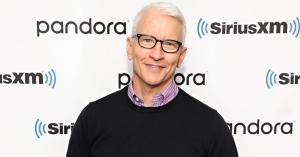This past weekend, the R-rated adaptation of Stephen King’s IT surprised all box office pundits with a staggering opening weekend of box office performance of $117 million, earning the biggest horror film opening of any MPAA rating, the largest September opening, and largest Fall opening. While this might seem like a clear-cut victory for the world of horror, some have dismissed the film’s terrifying subject matter as being a “drama” or “coming-of-age” film as opposed to being a “scary movie.”
Few genres of cinema have as passionate of a response to the word “horror,” causing the opposing reactions of either loving or hating them. No matter what your fears might be, whether they be the supernatural or the horrors created by society, each year is filled with movies that aim to explore the human reaction to these threats.
Videos by PopCulture.com
While many movie audiences might only be familiar with films that play in their local megaplexes, the rise of streaming services and VOD markets has given voices to independent filmmakers whose movies might not be as commercially profitable as a movie that has a familiar villain or star.
No matter what type of horror film you enjoy or your preferred method of viewing, 2017 has proven to be one of the most critically and financially successful years for the genre of the decade, which is nothing but great news for horror fans.
What’s in a Name?
In the early 20th century, silent films like Nosferatu and The Cabinet of Dr. Caligari and Universal monster movies like Frankenstein, Dracula, and The Mummy brought to life characters only read about in fiction, birthing an entire generation of nightmares. The horror and sci-fi genres proved to be financially viable for years to come, telling all manner of tales featuring monsters, ghosts, and creatures from another world.
The ’60s and ’70s brought together auteurs and top-tier performers, resulting in films like Rosemary’s Baby, The Omen, and The Exorcist. These films were so successful, in fact, that the Academy Awards embraced their accomplishments, nominating them for a variety of honors, showing just how successful the world of horror can be.
The ’80s helped popularize the concept of a “scary movie,” as slasher films featuring girls and gore dominated many markets. Sadly, for as many compelling films as the decade created, it also created the dismissal of the genre, as many of the films began highlighting sex and violence over storytelling and performances.
The genre has never quite recovered from this stigma, as even films like Silence of the Lambs or Black Swan, which have both earned Oscars, are referred to as “psychological thrillers” instead of “horror,” despite featuring cannibals, serial killers, murderous outrages, and descents into madness.
Starting the Year with Wins
The early months of any given year are often considered a dumping ground for movies, with the awards season having come to a close and prime Summer box office season months away. Despite this stigma, the horror genre helped give audiences some of the most captivating and socially poignant films of the year in its early months.
Beginning with 1999’s The Sixth Sense, writer/director M. Night Shyamalan gave audiences surprising twists and shocking revelations in his horror films so regularly that his last name became synonymous with an out-of-nowhere surprise in a film’s final minutes. His latest film, Split, featured James McAvoy as a man with fractured personalities, with some more deadly than others. The film’s only “twist” was that it was connected to another film in his universe of films, but as a whole, Split gave fans a creepy story of a kidnapper featuring a seminal performance from McAvoy, slipping between an elderly woman, a young boy, and a supernatural monster with ease.
In February, first-time director Jordan Peele, known primarily for his comedic projects, gave audiences Get Out, one of the most financially successful and critically-acclaimed films of the year, maintaining a 99% positive score on review aggregator site Rotten Tomatoes after hundreds of reviews.
Many may have expected a typical thriller about a black photographer meeting his white girlfriend’s family for the first time, but Peele masterfully circumvented expectations in this horror film. Part Stepford Wives and part Night of the Living Dead, Get Out explored a variety of race-related themes under the guise of a “horror” film, which was also full of humor and heart.

Summer Success
No matter what your horror movie proclivities, this summer delivered a variety of hits to audiences, with virtually each release being considered a success amongst a sea of big budget blockbusters.
For those hoping to get into the spirit of summer vacation, 47 Meters Down delivered an effective thriller about two women who go cage-diving, only for a mechanical mishap to cause their cage to plummet to the bottom of the ocean. The film didn’t give audiences an entirely new scenario, but it featured solid performances and well-crafted scares, with its minimal budget easily being recouped and resulting in an upcoming sequel.
A film being described as a “prequel to a spin-off of a horror movie” doesn’t bode well for its quality, but Annabelle: Creation delivered audiences what it promised, resulting in an entertaining tale of a haunted doll. If the film’s own financial success wasn’t noteworthy enough, it also helped the expanding universe of The Conjuring films push past the $1 billion mark worldwide, a feat more familiar franchises have never accomplished.
In the indie field, It Comes At Night gave audiences a nontraditional tale of a viral infection, which claimed anyone in its path, depicting a family whose trust issues might be more deadly than the virus itself. Additionally, films like The Blackcoat’s Daughter and Raw gave VOD audiences compelling tales of women at boarding schools, one of which explored Satanic worship while the other explored cannibalism.
‘It’ is a Game-Changer
In a year crowded with Stephen King adaptations, few were as highly anticipated as IT, hitting theaters 27 years after the initial miniseries adaptation debuted and became a defining image of a creepy clown.
The latest adaptation delivered a more successful product compared to the miniseries in every conceivable aspect, from cinematography to production value to performances, including Bill Skarsgard’s portrayal of Pennywise the clown. The film, which is based on the epic 1,100-page novel, opted to tell only half of the story’s timeline, saving the adult elements for a subsequent film.
Interestingly, the adaptation went into the weekend with an expected record-breaking $50 million haul, but that still wasn’t enough confirmation of interest to result in the announcement of a sequel. Now that the film has earned more than double its projections, word about a follow-up should come any day now. More importantly, even were a follow-up to not be announced, the initial film still delivered a wholly imagined story, not requiring an additional movie to fully enjoy this original installment.
What makes IT‘s success especially impressive is that it had a modest $35 million budget, a fraction of any Marvel Studios film, featured no recognizable “stars,” and is rated R. Sitting at 87% on Rotten Tomatoes, hopefully this has opened studios’ eyes to the fact that, above all, a compelling story and solid performances outweigh a high body count any day of the week.
Most Viewed
-

NEW YORK CITY – DECEMBER 19: "Toil and Trouble" – Elsbeth is thrown into the world of television after the showrunner of a long-running police procedural is brutally murdered in his office, and although it appears to be the act of a disgruntled fan, she begins to suspect the show's longtime star Regina Coburn (Laurie Metcalf) who yearns for artistic fulfillment. Meanwhile, Judge Crawford (Michael Emerson) continues to be a thorn in Elsbeth's side, on the CBS original series ELSBETH, Thursday, Dec. 19 (10:00-11:00 PM, ET/PT) on the CBS Television Network, and streaming on Paramount+ (live and on demand for Paramount+ with SHOWTIME subscribers, or on demand for Paramount+ Essential subscribers the day after the episode airs). Pictured (L-R): Carrie Preston as Elsbeth Tascioni and Carra Patterson as Kaya Blanke. (Photo by Michael Parmelee/CBS via Getty Images)







